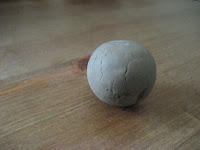 Have you ever looked at the back of your refrigerator? I don't do it often but I recently did a deep clean on my house and was checking out the funky coils on the back (some models have these tube-like things on the bottom). Those coils actually regulate the temperature of our fridge by drawing warm air out. But they don't work well when they're dusty. The dust bunnies on my fridge were hopping. So I gave the coils a good dusting and now I'm going to make it a habit to dust the fridge every two months. Why don't you make a a hot date with this cool appliance?
Have you ever looked at the back of your refrigerator? I don't do it often but I recently did a deep clean on my house and was checking out the funky coils on the back (some models have these tube-like things on the bottom). Those coils actually regulate the temperature of our fridge by drawing warm air out. But they don't work well when they're dusty. The dust bunnies on my fridge were hopping. So I gave the coils a good dusting and now I'm going to make it a habit to dust the fridge every two months. Why don't you make a a hot date with this cool appliance?Another thing I took note of was my refrigerator's temperature dial. I think lots of us don't notice it or we're afraid to adjust it. Many households have their dials set to match the Arctic tundra. In reality, your food should be between 38 and 42 degrees Fahrenheit. So check your fridge and see if you can turn up the dial and save some precious energy.
I did a bit of research because I've been considering building a small windmill on the remodel and my own home to produce the same amount of energy that a refrigerator uses each day. I was thinking about other ways in which our fridges become less efficient. Now, even though my son no longer lives with me (yippeee!), I clearly recall his pointless trips to the fridge. Opening the fridge was an obsession with him. He rarely pulled any food out of it or closed the door, for that matter. He just wanted to stare into the thing. I wondered if he was having visions of wavy gravy while he just gaped fixedly at the shelves. Nope. "Just checkin' it out", he'd mumble as he walked away from the still open door. I think that lots of homes have one or two refrigerator grazers and gazers. On average, a family's refrigerator gets opened about 22 times a day. That's over 8,000 times a year! This amounts to a lot of cold air being lost and a huge amount of electricity being wasted. So let's all make an effort to keep our visits to the fridge to a minimum, unless we're actually planning on eating something and closing the door.



































